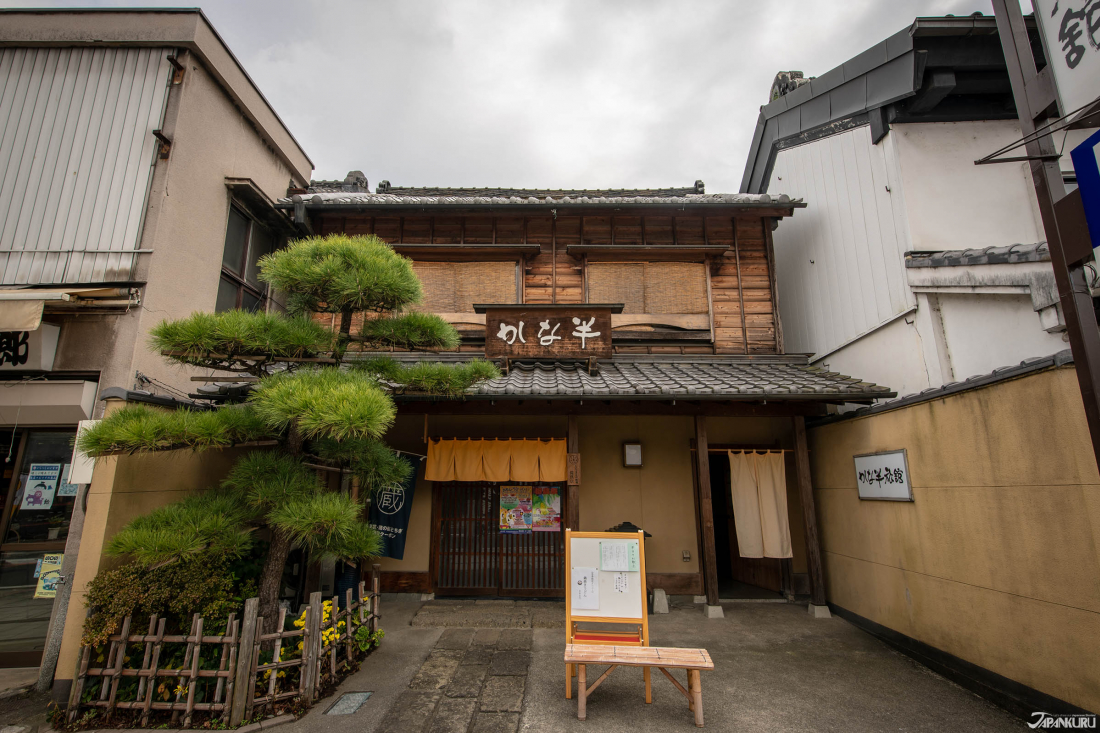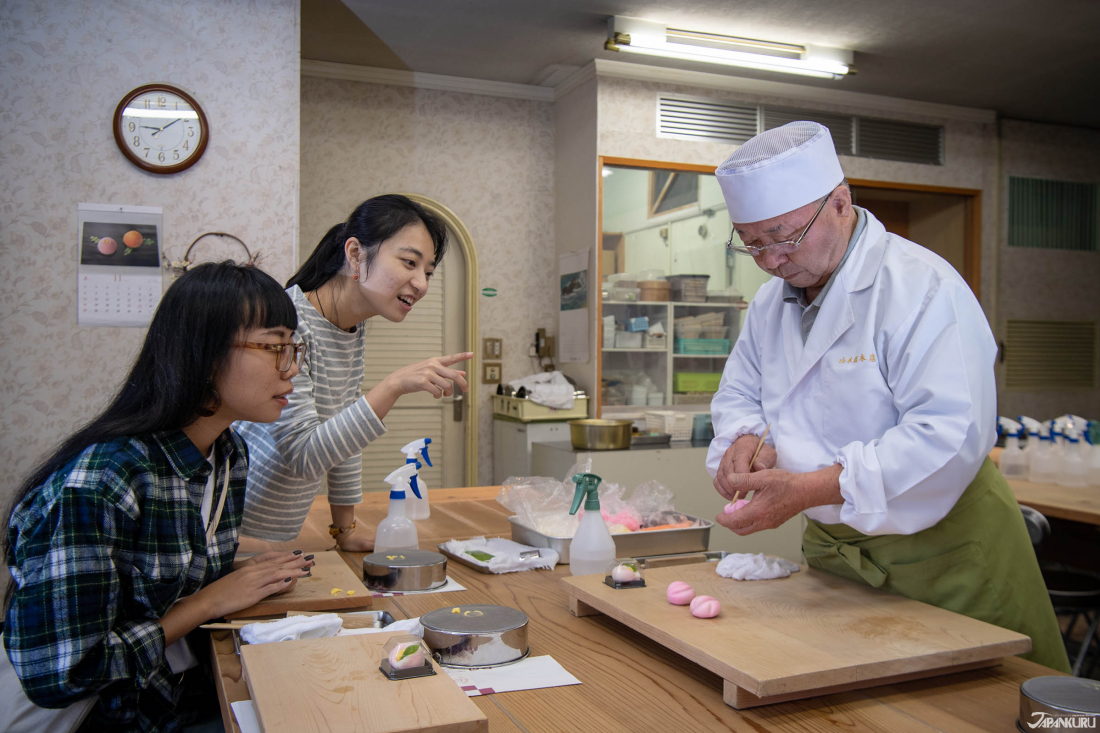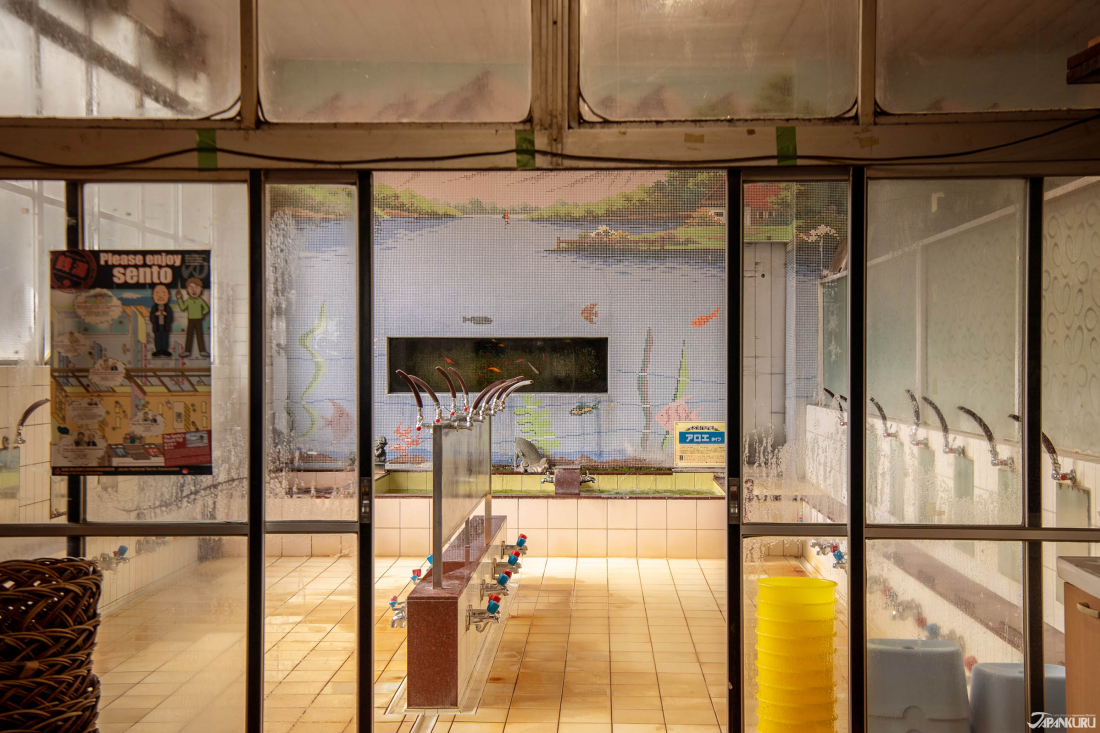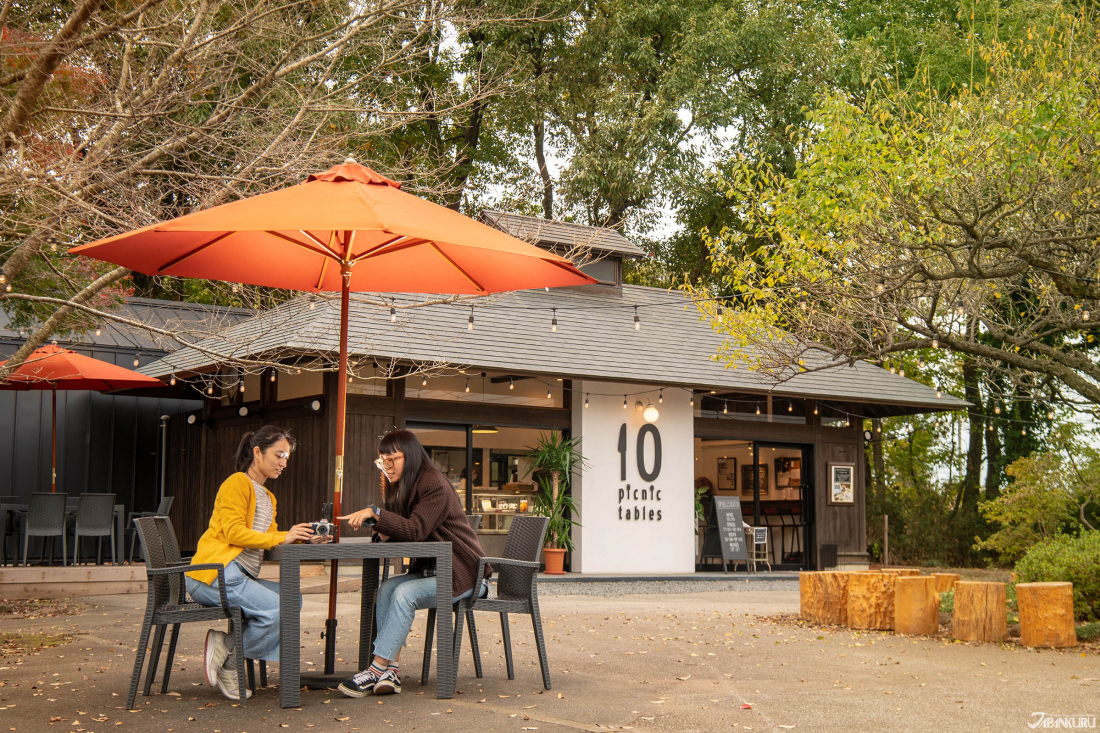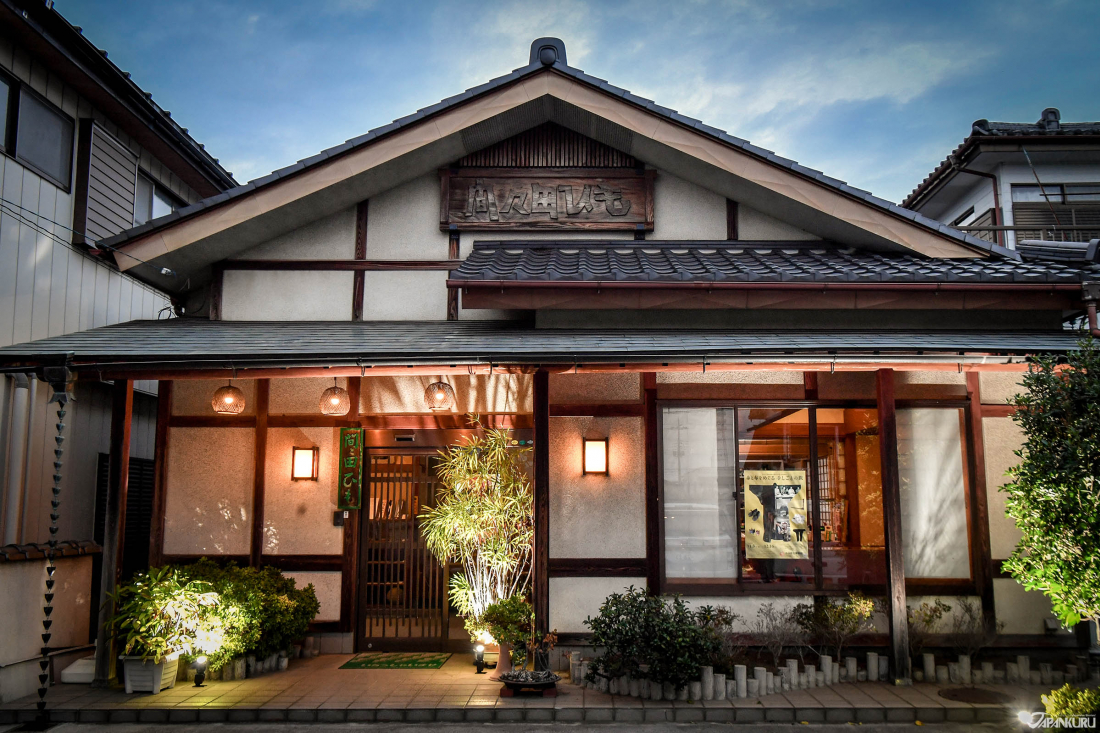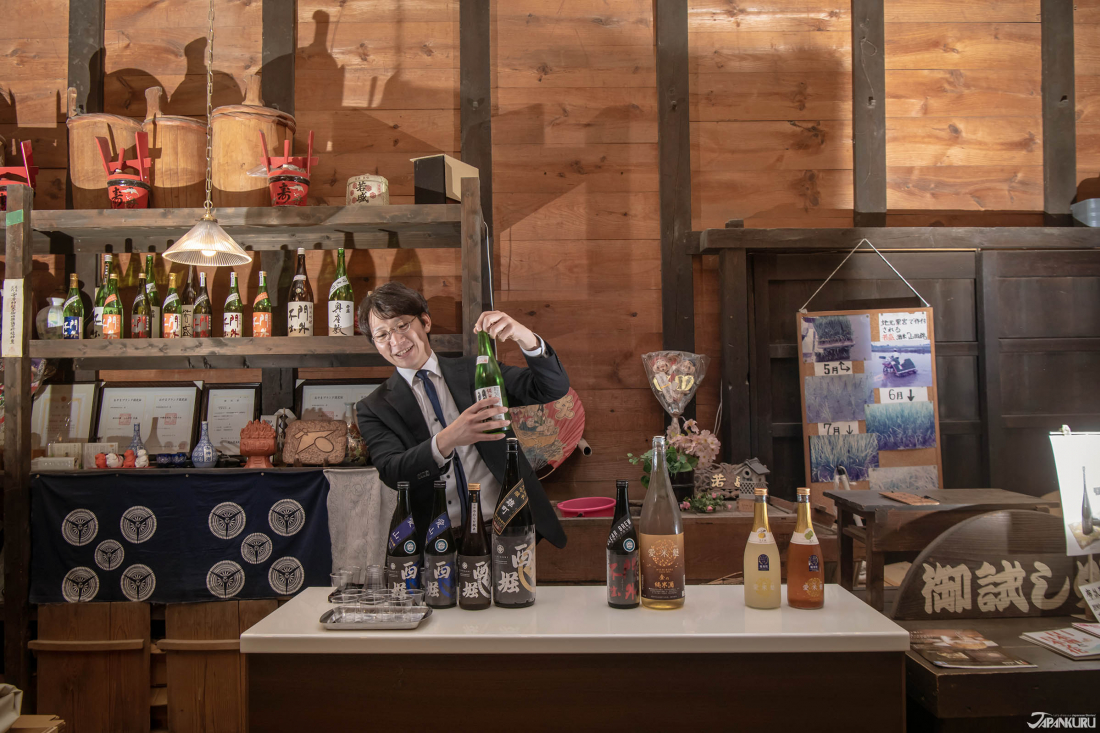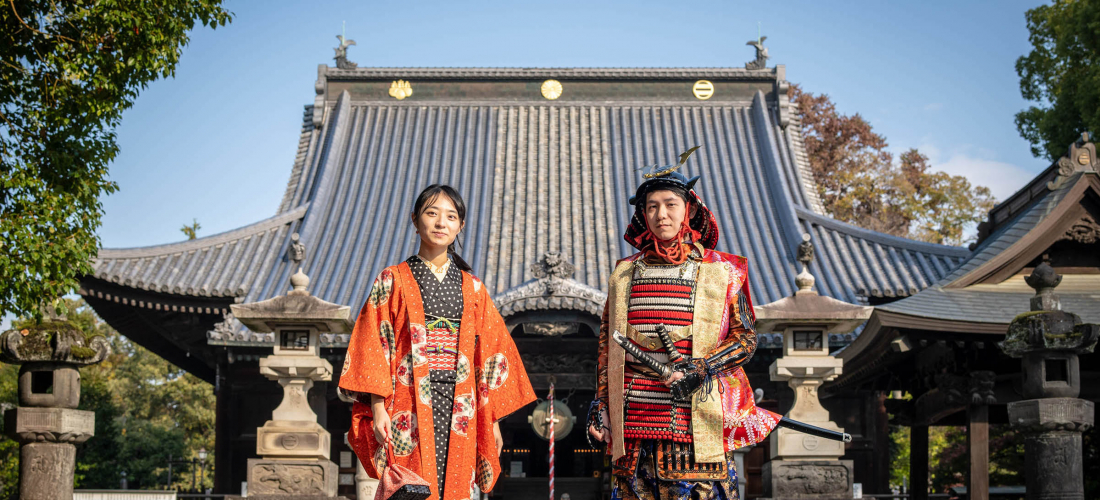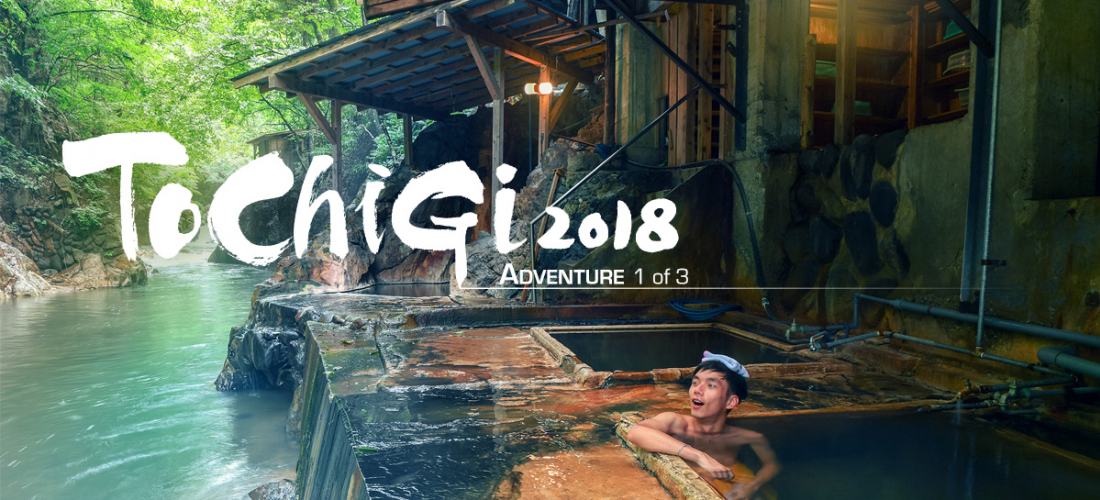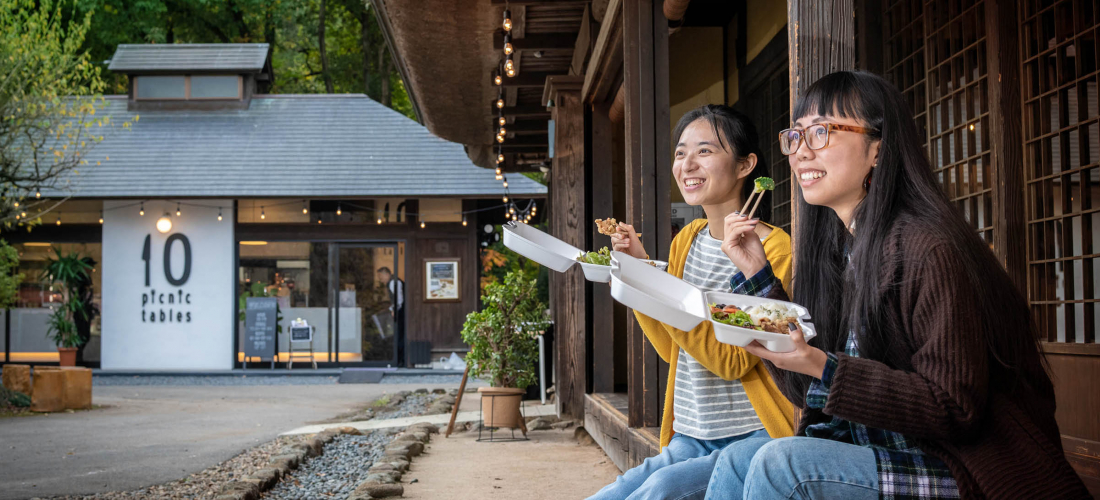
Even more of southern Tochigi!
栃木市
In the city, there is the Uzuma River (巴波川). In the Edo period, the Tochigi City area used to be an important port for water transportation. On land, it was also a passage for lords from Western Japan traveling to Nikko, so it has been prosperous as a commercial city with the name of "Little Edo". Many Kura Street (蔵の街) houses and businesses from the Edo period to the Meiji period have been preserved in the city and was awarded the "Beautiful Town Street Award" among 100 other stuffing Japanese cityscapes.
A Place to Stay That's Roughly 200 Years Old
Located in the middle of Kura Street (蔵の街) in Tochigi City, is an old hotel (a Japanese ryokan) with a history of more than 200 years. As soon as you go through the doors, you can the decor still remaining from long ago along with the hotel lady will have a friendly smile, which makes people feel like they are coming home. Depending on the type of room, some have separate toilets and bathrooms, some have only toilets, and some have only sinks. Of course, there are public baths and washrooms in the hotel, but because they are more family-style, there is no distinction between men and women. Breakfast is a lavish Japanese-style meal.
✴Kanahan Ryokan (かな半旅館)
Google Maps
Official website
Walking around an Old Edo Street
Here you will find lots of Edo period buildings and warehouses. The atmosphere is somewhat similar to Kawagoe, but it isn't just a street with old buildings there are plenty of traditional Japanese stores that you can pop into like making traditional Japanese confections "wagashi" (和菓子). It has also been in many movies and TV shows, including the popular movie Gin Tama (銀魂). Kura Street allows people to experience Japanese culture more deeply.
Learning to Make Japanese Confections Wagashi
Located in the middle of the street, the old-fashioned shop "Yamamoto Honten" (山本総本店) was founded in the 25th year of Meiji. It is located in the workshop opposite the sales outlets and has opened a wagashi hand-made classroom, which is guided by a staff of decades of experience. Depending on the season, the type of wagashi you make is different. The cost is 1500yen, which allows you to make two different sweets for about a 50min course. Learning about professional production props, exquisite kneading techniques, and professional demonstrations by the masters is really a rare experience. If you are interested, remember to make an appointment at least two days in advance.
✴Yamamoto Kashi (山本総本店 和菓子作り体験)
Google Maps
Official website
Also along Kura Street (蔵の街), there is a building with large goldfish painted on the wooden sliding doors that we were sure wasn't open to the public. First opening in the 22nd year of the Meiji era (1889), this building is a public bath named Tamagawa no Yu (玉川の湯), but due to the goldfish painting in the front people also call it "Goldfish-yu". After the reconstruction in 28th year of the Showa era (1953), the bathhouse hasn't changed a bit. Even the water in the bath is still heated by firewood. You can rent a towel for free, along with shampoo, conditioner, soap, toothbrush, razor, etc are also on sale so coming empty handed isn't a problem. What threw us back was the skateboard/bike ramp upstairs! For 500yen you can take a bath and use the ramp upstairs, otherwise, you just need 300yen for the bath.
✴Tamagawa no Yu (Goldfish-yu) (玉川の湯 (金魚湯))
Google Maps
10min walk from Tochigi Station
⏰11am~11pm
Closed: Wednesdays
💴Adults 350yen, Children (age 6~12) 150yen, Age 6 and below 80yen
Taking a Boat Ride along Little Edo's Uzuma River
As a distribution center for materials in the Edo period, the Uzuma River along Kura Street was always filled with boats like the "bekabune" (部賀舟). At that time, there were many shipyards and wealthy merchants on both sides of the river. The Kuranomachi Pleasure Boat Agency introduces an entertaining and educational way of going down the river. On the way back, the oarsman sang a song about the Tochigi river bank. The river water is so clear you can even see many koi and other fish swimming along with some cute ducks. The cruise costs 700yen for adults, and for those who brought their doggy friend(s) they can even come on board too!
✴Kuranomachi Pleasure Boat Agency (蔵の街遊覧船)
Google Maps
⏰March~Nov. 10am~4pm
Dec.~Feb. 10am~3pm
Closed: New Year's and during bad weather
💴Adults 700yen, Children (Elementary school) 500yen, 1 years and under free
Bringing a dog aboard 100yen
Official website
Afternoon Tea in a Building Built during Meiji Era
Checking out the northern area Kura Street (北蔵), we came across a cafe that specializes in all hand-made pastries that have their own unique taste. The most popular items are Kitakura Roll (北蔵ロール) (350yen) and their thick pancakes (厚焼きホットケーキ) (350 yen), and if you order a drink they take off 100yen.
✴Kitakura cafe Higano (北蔵カフェ ひがの)
Google Maps
⏰10am~5:30pm
Closed: Thursdays
Official website
下野市
The area of Shimotsuke City has rich historical and cultural traits. During the Asuka and Heian period (from 538 to 1185), the area played a central role in eastern Japan as the cultural core, leaving ancient heritages such as haniwa (埴輪) (clay figurines buried with the dead) of the Kabutozuka Kofun (甲塚古墳), Shimotsuke Yakushi-ji Temple (下野薬師寺跡), and more. Shimotsuke City is still the third largest city in Tochigi Prefecture and one of the most beautiful places to see cherry blossoms.
A Cafe in a Park Filled with Folk Takes
Inside Tenpyo no Oka Park is an old private house cafe "10 picnic tables" that you can relax while being surrounded by nature. You can choose to eat at one of their seating arrangements outdoors or at the old house next door to eat indoors, or take some of the food to go and have a picnic! This park is also famous for being one of Tochigi Prefecture's best cherry blossom spots, so if you come during April you will have a beautiful sight.
✴Ko Minka Cafe 10 picnic table (古民家カフェ 10 picnic table)
Google Maps
⏰11am~5:30pm
Closed: Thursdays
Official website
A Hidden Fairy Tale Forest
Shimotsuke City isn't only a place of beautiful trees and trails but also filled with European-style houses and gardens. From Showa era, Ishibashi-cho (石橋町) in Shimono City became a sister city with the village of Steinbrucken in Germany. It was there Steinbrucken Village met with Hessen, which is where the Grimm brothers are from resulting in the creation of the Grimm Forrest "Grimm no Mori" there are mysterious Grimm brotheresque trees, a golden goose fountain, and more. The Grim no Kan building, which houses a multipurpose hall, is based on the Röttingen government building. Inside are collections related to the Brothers Grimm's fairy tales from all around the world.
✴Grimm Forest (グリムの森)
Google Maps
⏰9am~7pm
Closed: Tuesdays, the end of the month, New Year's
Official website
小山市
There are many rivers flowing through the east and west sides of Oyama City, which makes the city rich in water resources, and achieving good development of agriculture, industry, and residential businesses. Then in the northern part of the city has been a silkworm producing area since ancient times. The silk produced in the area is similar to that in Yuki City, Ibaraki Prefecture called "yuki tsumugi". Developing from earlier silk techniques yuki tsumugi was adopted in 1602. It has been designated as one of the Important Intangible Cultural Properties of Japan, and has also been inscribed on the UNESCO Representative List of the Intangible Cultural Heritage of Humanity.
The yuki tsumugi technique is employed to produce a light and warm material with a characteristic stiffness and softness, traditionally used to make kimonos. The silk floss for the yarn in yuki tsumugi weaving is produced from empty silkworm cocoons. This recycling process plays a significant role in supporting local sericulture communities. In the super famous anime "Your Name" (君の名は), there is a scene where the main high school girl Mitsuha and her family are weaving traditional knots, a Japanese form of braid-making known as "Kumihimo" (組み紐). Well, that same sort of braid making weaving can also be done in the south part of Oyama. You can choose between making a bracelet or charm, decide the colors of the thread you want to use, and complete the work under the guidance of the staff.
✴Mamada Himo (間々田ひも)
Google Maps
⏰10am~7pm
Closed: Mondays, and Tuesdays when Mondays are national holidays
Official website
Tochigi Original Sake
As mentioned above, due to Oyama having such good water resources, it only makes sense that there would be some distilleries. For example, the old sake distillery Nishibori Shuzo Sake (西堀酒造), which has been established since the Meiji era. It uses the local soft and hard water to make a series of unique Japanese sake. The classic series "Mongai Fushutsu" (門外不出) is loyal to its name and insists on local manufacturing which makes it not available in other parts of Japan. You can visit the sake distillery for only 300yen and you will get to see the process and get to drink the freshly made sake. You need to make an appointment beforehand so be aware of that!
✴Nishibori Shuzo Sake (西堀酒造)
Google Maps
⏰8am~5pm
Closed: Sundays and national holidays
Make reservations here (Japanese)
Official website
After bidding farewell to the old sake distillery, we embarked on the way back home to Tokyo (we had a DD of course!). This time JAPANKURU introduced you to our two-day, one-night road trip of South Tochigi. We hope some of the places sparked an interest with you so that you can add it to your travel notes! Until next time!👋
Be sure to look at JAPANKURU🐶 for more exciting articles every day!!
Or add us on Instagram and Facebook to share your Japanese pictures💖🗾
PROFILE
Follow us @Japankuru on Facebook, Instagram, and Twitter!
COMMENT
FEATURED MEDIA
VIEW MORE
・Accommodations for Odaiba Sightseers: Mitsui Garden Hotel Toyosu PREMIER ・住宿推薦 三井花園飯店 豐洲普米爾 ・오다이바 관광 맞춤 숙소: 미츠이 가든 호텔 토요스 프리미어 ・ค้างคืนที่ Mitsui Garden Hotel Toyosu Premier โรงแรมสำหรับผู้มาเยือน Odaiba #japankuru #odaiba #tokyo #tokyotrip #japantrip #japantravel #mitsuigardenhotel #mitsuigardenhoteltoyosupremier #tokyohotel #odaibahotel #toyosu #tokyoview #tokyobay #rainbowbridge #미츠이가든호텔토요스프리미어 #오다이바 #오다이바맛집 #오다이바건담 #오다이바해변공원 #오다이바야경 #오다이바온천

Nagano Prefecture is famous for delicious soba noodles, and in the city of Ueda, you can learn from the experts! Local aunties run this cooking class, teaching you everything you need to know to make your own delicious plate of soba noodles entirely from scratch. #japankuru #soba #sobanoodles #japanesefood #travelexperience #japan #japantrip #ueda #nagano #japaneseculture #japanexperience #daytrip #daytour #cookingclass #japanesecookingclass #上田市 #そば作り #소바체험 #우에다시 #나가노여행 #일본소바

Kuramae Shrine is known for its early-blooming cherry blossoms and its gorgeous golden mimosa blooms, making it a great sakura spot for travelers arriving in Tokyo a little early for the main cherry blossom season. It’s also tucked away in a neighborhood packed with trendy cafes and coffee shops. Kuramae is a lovely place to spend the day. 🌸☕️ ・ #japankuru #kuramaeshrine #kuramae #tokyo #tokyotrip #cherryblossom #cherryblossoms #mimosa #tokyocherry #花見 #蔵前神社 #ミモザ #桜 #東京 #Japan #日本 #일본 #Japon #ญี่ปุ่น #Japão #Japón #япония #japantravel #日本旅行 #日本旅遊 #일본여행 #japan_of_insta #japantrip #traveljapan

Local Japanese Favorites at the Okinawa Don Quijote ② Ohta’s Isan, the digestive aid of the Japanese people ・ ・ 2024唐吉訶德不可不知的好物推薦② 日本國民消化小幫手:太田胃散 ・ ・ 오키나와 돈키호테 숨은 꿀템2. 일본 국민 소화제! 오타이산 #japankuru #okinawa #donki #沖縄 #오키나와 #오키나와여행 #오키나와돈키호테 #일본쇼핑리스트 #오타이산 #일본소화제 #太田胃酸 #ohtasisan

Happy Valentine's Day from the Japankuru team! May your day be full of sweet chocolates and sweet nothings. 💕 Or, if you're like a rising number of women in Japan, take the opportunity to treat yourself! 🍫💝💆 • Find out more at Japankuru.com! (Link in bio.) • #japankuru #valentinesday #valentineschocolate #japanesechocolate #japaneseculture #バレンタイン #バレンタインチョコ #メリーチョコレート #Japan #日本 #일본 #Japon #ญี่ปุ่น #Japão #япония #japantravel #日本旅行 #日本旅遊 #일본여행 #japan_of_insta #japantrip #traveljapan #japan🇯🇵 #japanlife #igerstokyo #explorejapan #japanfocus #enjoyjapan #japantravelphoto

Japankuru Coupon: BEAMS fashion, accessories, lifestyle goods, and more! BEAMS 5% Discount Coupon ▶︎ Validity Dates: February 1 ~ February 29, 2024 ▶︎ Discount: 5% off all products in-store ▶︎ Usable At: BEAMS stores throughout Japan (all stores except BEAMS JAPAN Izumo and BEAMS JAPAN Nikko) ▶︎ Details: Please present this coupon page before payment to receive your discount! This coupon is also valid in combination with tax-free discounts/refunds for foreign tourists. (Tax-free shopping is only available at some BEAMS locations.) Some products may not be eligible for discount. ・ ・ ・ BEAMS - JAPANKURU優惠折扣券 BEAMS 2024年2月限定特別優惠券 店內全部商品95折 ▶︎使用期間:2024/2/1到2024/2/29 ▶︎使用範圍:日本全國店舖 ▶︎使用方法:結帳時請務必事先向店員出示本優惠券,若未出示本優惠券恕無法享有本優惠。本優惠券可搭配免稅優惠一併使用,但不排除特定門市無法使用本優惠券。此外,不排除特定商品不適用本優惠券。 ・ ・ ・ 「빔즈(BEAMS) x 재팬쿠루(JAPANKURU)」스페셜 할인 쿠폰 빔즈(BEAMS) 5% 할인 쿠폰 ▶유효기간: 2024년 2월 1일 ~ 2월 29일(한 달 동안) ▶︎할인율: 매장 내 전 상품 “5% 할인" ▶︎해당 매장: 일본 전국 빔즈 (BEAMS) 매장 (BEAMS JAPAN이즈모、BEAMS JAPAN닛코는 쿠폰 할인 대상 제외 점포입니다) ▶︎상세 내용: 결제 전 본 쿠폰 페이지를 제시하면 정가대비 5% 할인된 금액에 구매하실 수 있습니다! 본 쿠폰은 외국인 관광객들을 대상으로 하고 있으므로 면세 혜택(빔즈 일부 매장)과 별도로 추가 할인이 가능합니다. (일부 매장 및 제품은 대상에서 제외될 수 있습니다.) #japankuru #beams #beamsjapan #beamsginza #coupon #재팬쿠루 #빔즈재팬 #빔즈 #일본여행 #일본쇼핑 #일본쇼핑리스트 #銀座 #東京 #tokyoshopping #japankurucoupon


